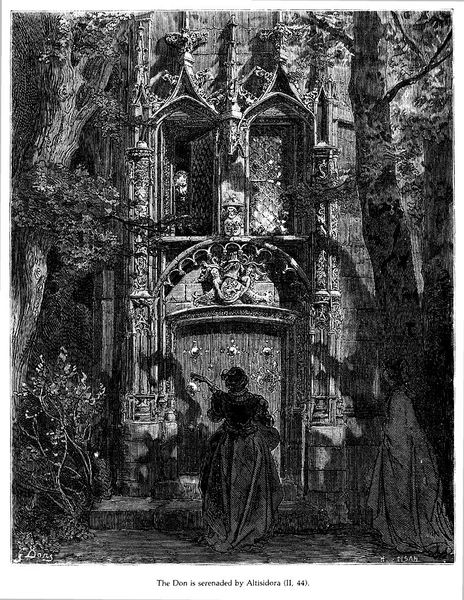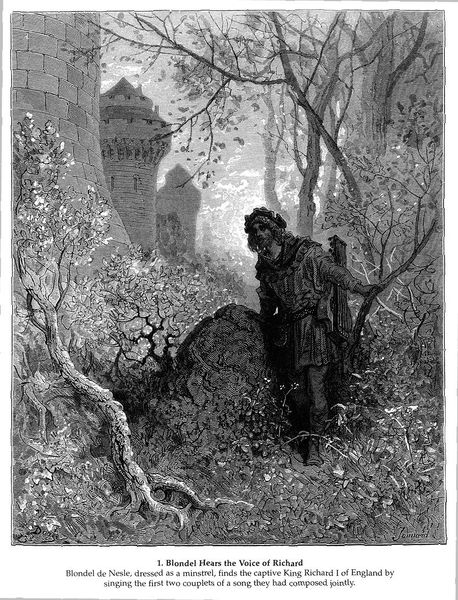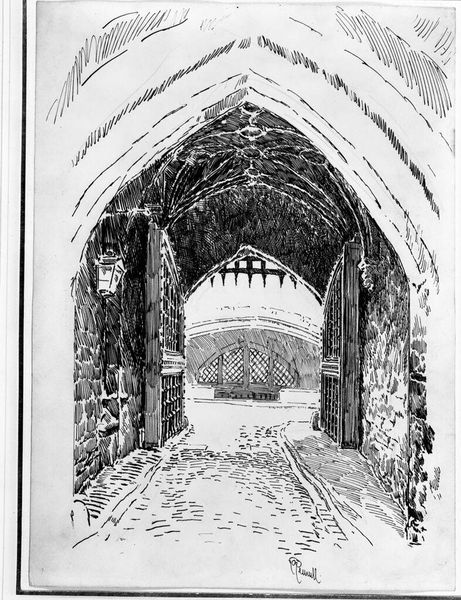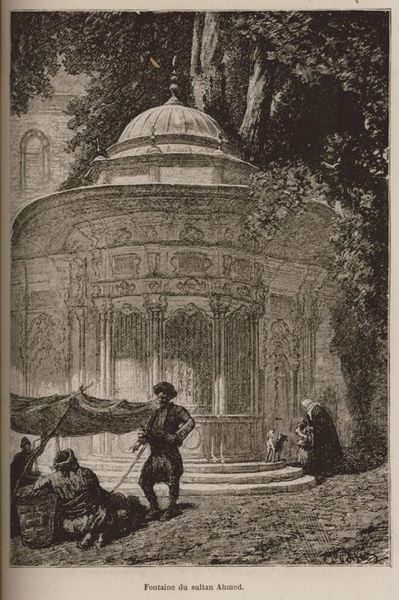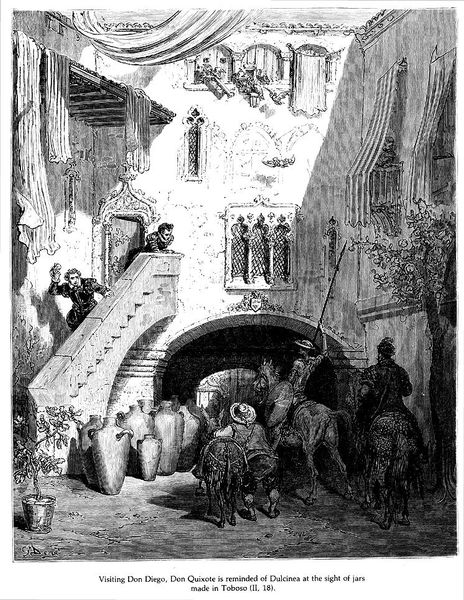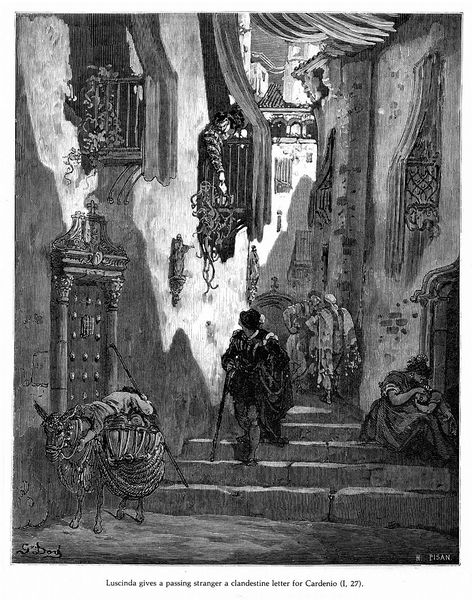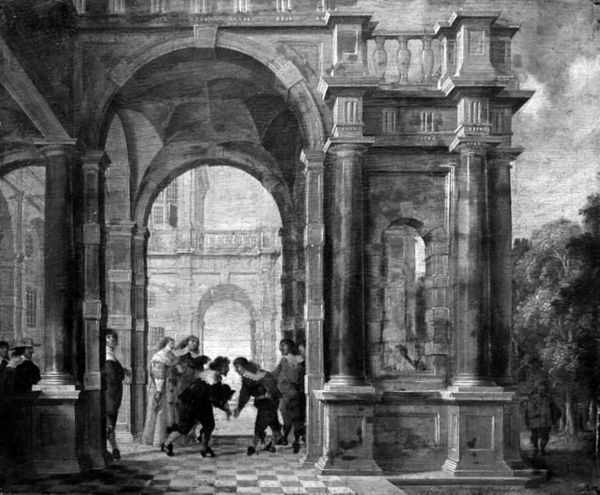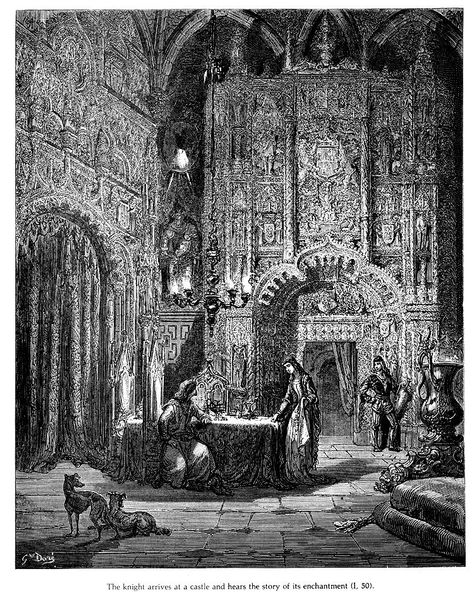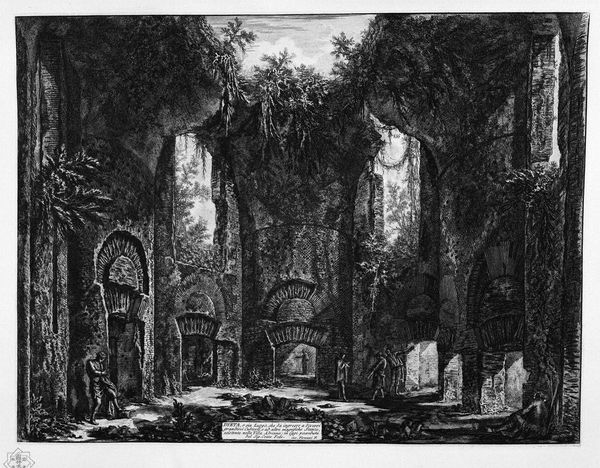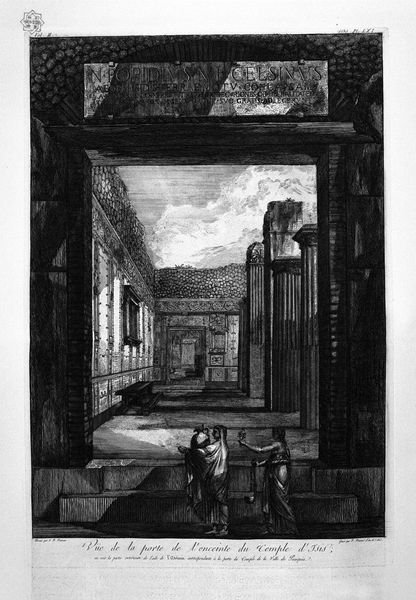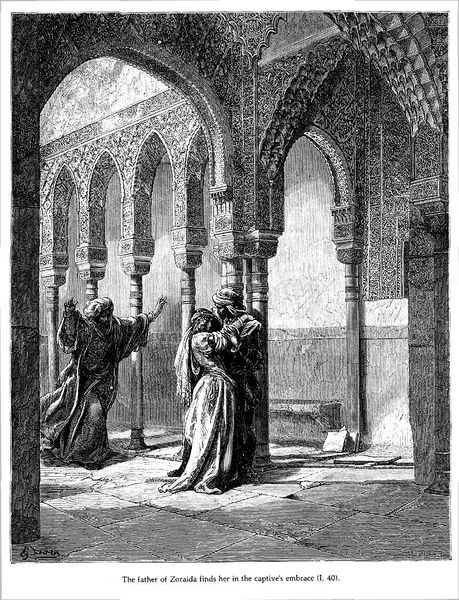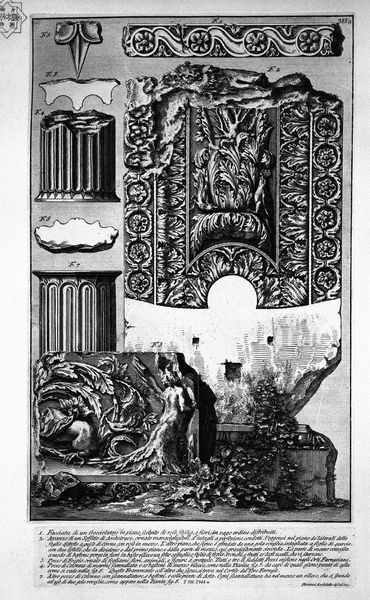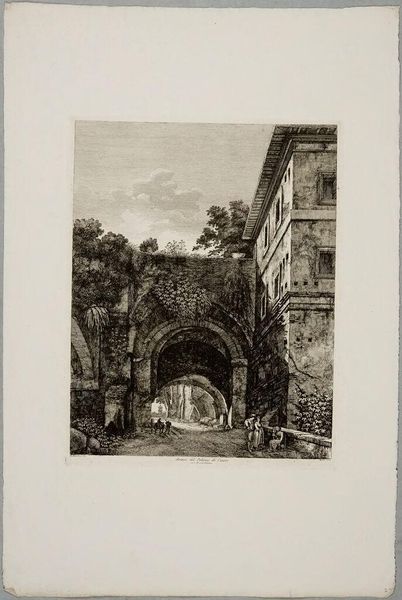
drawing, photography, engraving
#
drawing
#
narrative-art
#
landscape
#
photography
#
black and white
#
line
#
history-painting
#
engraving
#
monochrome
Copyright: Public domain
Gustave Doré created this illustration for an edition of Cervantes’ "Don Quixote" during the 19th century, a period marked by European colonial expansion and a fascination with the ‘Orient.’ The scene depicts a woman leaving with her father, framed by Moorish architecture, hinting at the historical and cultural complexities of Spain, marked by centuries of Islamic presence. Doré, a French artist, was working within a tradition of European Orientalism, where the ‘East’ was often romanticized or exoticized. Consider how this image might reflect or challenge the identity of the people who historically lived in these spaces? How might the woman in the image be interpreted as a figure caught between cultures, her departure charged with the weight of cultural and personal loss? Doré's illustration invites us to reflect on the historical narratives that shape our understanding of identity, culture, and place.
Comments
No comments
Be the first to comment and join the conversation on the ultimate creative platform.
